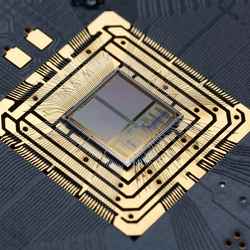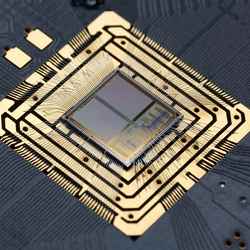
In the mid-20th century, digital computing rapidly took over from its analog predecessor. Thanks to Moore’s Law, digital computing has become so successful that many computer scientists think the days of analog computing are forever gone.
However, analog computing is making a comeback.
Digital computing does face some problems, which become especially apparent if we compare the digital Von Neumann computer with the analog human brain. A supercomputer easily consumes megawatts of electrical power, compared to only 20 watts consumed by the human brain (the energy problem). Software is becoming a bottleneck, particularly in massively parallel digital (the software problem). As transistors become smaller and smaller, they also become less reliable (the reliability problem). A computer simulation of a brain process is typically 100 to 1,000 times slower than its biological equivalent (the speed problem). Last but not least, high-performance supercomputers are bulky compared to the human brain (the compactness problem).
Overcoming these five problems is the aim of Karlheinz Meier of Heidelberg University in Germany, co-director of the 10-year European Human Brain Project (HBP) and project leader for neuromorphic computing within the HBP. "Neuromorphic computing will never replace writing emails or filling spreadsheets," he says, "but it has the potential to deal much better than digital computing with unexpected and noisy data and with making predictions based on internal models of the physical world," activities the human brain performs extremely well and that artificial intelligence, despite Moore’s Law, does not.
Insect brain
With his colleagues, Meier has built a single neuromorphic chip with the electronic equivalent of 400 hundred neurons and 100,000 synapses (connections between neurons). In comparison, the human brain contains about one billion information processing neurons and 10,000 times as many synapses.
Says Meier, "Simply said, a neuron on a neuromorphic chip is represented in silicon as a capacitor and a resistor connected in parallel. Its behavior results from its physical characteristics and closely resembles that of a biological neuron. Rather than talking about numbers and programs as in digital computing, we talk about voltages, currents, and electrical charges in neuromorphic computing."
In digital computing, the memory and the processor are separate units, while neuromorphic memory and processing take place on the same chip. Each neuron has about 20 configurable parameters and each synapse has a configurable weight. Users of a neuromorphic chip can configure both the network and the individual cells.
With a single neuromorphic chip, Meier and his colleagues have shown they can reliably model the odor detection system of insects: the ability to categorize different odors and assign them to different flowers. "If we can do it for odors, we can also do it for other types of data," says Meier. "It is a generic biological system, unlike pattern recognizing programs used in digital computing."
Consciousness
At Heidelberg University, the single neuromorphic chip has been scaled up to a 20-centimeter wafer containing 200,000 neurons and 50 million synapses. "As part of the Human Brain Project, we will build a system of 20 of these wafers that will be connected to each other," says Meier. "The aim is to have it working by October 2015, and then it will be the biggest neuromorphic computing system in the world. However, to get it up and running is still a huge engineering effort."
One of the many other goals of the HBP is to simulate the visual system of the brain. "That is definitely within reach," says Meier, "but to what extent it will be able to mimic the visual brain system is an open question. Is our model of a neuron too simple, or is it just all right? We’ll have to see. We will use the results of our neuroscientist colleagues within the HBP to adjust our model of a neuron or of the network, if necessary."
Meier is often asked whether they will build a conscious electronic brain. "I refuse to talk about that," he says. "We are building a playground for both neuroscientists and computer scientists. We will see what comes out when 1,000 scientists will be able to use this playground. Apart from reverse-engineering the brain, from a theoretical computer science perspective it will be very interesting to explore with neuromorphic chips the fundamentals of computation. How is information being stored? How are decisions being made? How does learning work?"
While in principle digital computing can do everything that analog computing can do, it remains to be seen whether digital computing can achieve this in practice. Says Meier, "Personally, I am convinced that massively parallel information processing like the brain does cannot be reached by conventional digital computing any time soon."
Bennie Mols is a science and technology writer based in Amsterdam, the Netherlands




Join the Discussion (0)
Become a Member or Sign In to Post a Comment